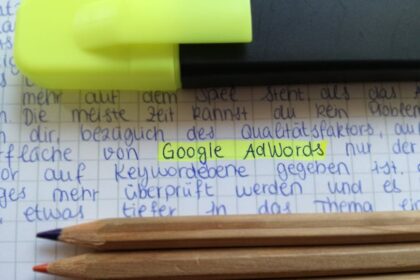Internal Linking Strategies for SEO Power
Internal linking is a fundamental yet often underutilized aspect of search engine optimization, serving as a powerful conduit for distributing authority, enhancing user experience, and reinforcing topical relevance across a website. Far beyond merely connecting pages, a robust internal linking structure acts as the very circulatory system of a website, dictating how search engine crawlers navigate and understand the relationships between different content assets, and simultaneously guiding users through a logical and informative journey. Understanding the intricacies of internal linking strategies is paramount for any digital entity aiming to maximize its organic search performance and establish definitive authority within its niche.
At its core, an internal link is simply a hyperlink that points from one page on the same domain to another page on that same domain. These links are distinct from external links, which point to pages on different websites. The strategic deployment of internal links allows webmasters to exert significant control over the flow of “link equity” or “PageRank” within their site, a crucial factor in how search engines like Google assess the importance and authority of individual pages. When a high-authority page, perhaps one with numerous quality backlinks from external sites, links to another internal page, it passes a portion of its accumulated equity to the linked page. This process, often referred to as “PageRank sculpting,” helps to elevate the visibility and ranking potential of target pages that might otherwise struggle to gain traction in search results.
The utility of internal links extends significantly beyond mere equity distribution. They are indispensable for improving a website’s crawlability and indexability. Search engine bots, such as Googlebot, traverse the web by following links. A well-constructed internal linking profile ensures that all significant pages on a website are discoverable and accessible to these crawlers. Without adequate internal linking, valuable content, particularly deeper pages within the site architecture, risks becoming “orphaned” – pages that exist but have no internal links pointing to them, making them extremely difficult for search engines to find and index. Consequently, such pages are unlikely to appear in search results, regardless of the quality of their content or the relevance of their keywords. A comprehensive internal link network acts as a robust map, guiding bots efficiently through the entire site, ensuring no valuable content is overlooked and that updates are recognized promptly.
Beyond the technical SEO benefits, internal links are profoundly influential in shaping the user experience. They provide natural pathways for visitors to explore related content, delve deeper into topics of interest, and discover valuable information that might not be immediately apparent from the landing page. By offering relevant links within the body of content, in navigation menus, and through contextual suggestions, websites can significantly enhance user engagement metrics such as average session duration, pages per session, and reduce bounce rates. When users find it easy to navigate and discover more relevant content, they are more likely to spend extended periods on the site, which signals to search engines that the website is valuable and authoritative. This positive user behavior, in turn, can indirectly contribute to improved search rankings.
Furthermore, internal links play a critical role in establishing and reinforcing the contextual relevance and keyword associations of pages. The anchor text – the visible, clickable text of a hyperlink – provides crucial signals to search engines about the topic and content of the linked page. When a page about “advanced internal linking strategies” links to another page using anchor text like “SEO power of internal links,” search engines understand that the target page is highly relevant to that specific keyword phrase. Consistent and thoughtful use of descriptive anchor text across a site helps search engines to accurately categorize and understand the thematic relationships between different pieces of content, solidifying the website’s authority on specific subjects. This strategic use of anchor text, while requiring careful consideration to avoid over-optimization, is a cornerstone of effective internal linking for SEO power.
The foundational design of a website’s architecture is intrinsically tied to its internal linking strategy. A well-planned site architecture, often envisioned as a hierarchical structure akin to a pyramid, relies heavily on internal links to connect broader, more general topics (pillar pages) at the top to more specific, detailed content (cluster pages) lower down. This structure, frequently referred to as “content siloing” or “topic clusters,” not only aids search engine understanding but also simplifies user navigation. By logically grouping related content through internal links, a website can build strong thematic authority around specific subjects, making it easier for search engines to recognize the site as a comprehensive resource for those topics. This deliberate organization, facilitated by strategic internal linking, is a powerful technique for outranking competitors in competitive niches.
The direct impact on improved rankings is a cumulative effect of all these benefits. When a website intelligently distributes link equity, ensures comprehensive crawlability, enhances user engagement, and clearly defines its topical authority through well-chosen anchor text and structured content, it presents a compelling case to search engines for higher organic visibility. Internal links are not merely technical elements; they are strategic assets that, when meticulously planned and implemented, can profoundly elevate a website’s presence in search engine results pages (SERPs), contributing significantly to long-term SEO success.
Strategic planning for internal linking begins with a comprehensive understanding of existing content and future content goals. The first step involves performing a thorough content inventory. This entails listing every single page on the website, categorizing them by topic, purpose, and existing performance metrics such as traffic, conversions, and existing link equity. Identifying core “pillar content” or “cornerstone content” is crucial at this stage. Pillar pages are typically broad, comprehensive resources that cover a wide topic area and serve as central hubs for numerous related, more specific articles. These pages are prime candidates for receiving a high volume of internal links, as they are often the ones intended to rank for high-volume, competitive keywords.
Following the content inventory, a robust keyword mapping exercise should be undertaken. This involves associating target keywords with specific pages and understanding the search intent behind those keywords. This mapping informs the anchor text strategy and identifies opportunities to create new content that addresses keyword gaps. For instance, if a pillar page targets “digital marketing strategies,” supporting cluster content might focus on “SEO techniques,” “content marketing tactics,” or “social media advertising,” each with its own set of long-tail keywords. The goal is to build a web of interconnected content where internal links guide both users and search engines through the topic comprehensively.
Designing the site structure is intrinsically linked to internal linking. A flat site architecture, where most pages are accessible within a few clicks from the homepage, is generally preferred for SEO. This minimizes the “click depth” – the number of clicks required to reach a page from the homepage – which makes it easier for crawlers to discover content and for link equity to flow efficiently. Content siloing, a strategic method of organizing content into thematic groups, is often employed to create a logical and organized structure. Soft siloing involves using internal links to connect related pages, while hard siloing might involve structuring content within specific subdirectories (e.g., www.example.com/seo/internal-linking). Both approaches aim to reinforce topical authority and concentrate link equity within related clusters.
Before implementing new strategies, a thorough audit of existing internal links is indispensable. Numerous tools can facilitate this process. Screaming Frog SEO Spider is a desktop crawler that can simulate a search engine bot, providing a comprehensive report of all internal links, their anchor text, status codes (identifying broken links), and click depth. Other powerful tools like Ahrefs, SEMrush, and Moz offer site audit features that include internal link analysis, highlighting orphaned pages, pages with too many or too few internal links, and potential issues with anchor text. Google Search Console’s “Links” report also provides insights into internal links, showing which pages are linking to others and with what frequency. The audit should identify:
- Broken internal links: These not only create a poor user experience but also waste crawl budget and prevent link equity from flowing.
- Orphaned pages: Pages with no internal links pointing to them, making them virtually invisible to search engines.
- Pages with excessive internal links: While there’s no strict limit, too many links on a single page can dilute link equity and overwhelm users.
- Poorly optimized or generic anchor text: Missing opportunities to reinforce keyword relevance.
- Suboptimal link equity distribution: Identifying high-authority pages that could be leveraged to boost weaker, yet important, pages.
Competitive analysis can also provide valuable insights. By examining how competitors in your niche structure their internal links and which pages they prioritize with internal equity, you can uncover opportunities or validate your own strategic approaches. This isn’t about direct copying, but rather understanding industry best practices and identifying potential content gaps or structural advantages that your site could adopt or improve upon.
Implementing best practices for internal linking demands meticulous attention to detail and a user-centric approach alongside SEO considerations. The cornerstone of effective internal linking is anchor text optimization. The clickable text of an internal link should be descriptive, concise, and contextually relevant to the target page. While keyword-rich anchor text is beneficial for signaling relevance to search engines, it’s crucial to avoid “exact match” keyword stuffing, which can appear unnatural and trigger algorithmic penalties. A natural variation of anchor texts, including partial matches, brand names, and general phrases, is always recommended. For instance, linking to a page on “SEO best practices” could use anchor texts like “learn more about SEO,” “our guide to SEO best practices,” “understanding search engine optimization,” or simply “SEO strategies.” The goal is clarity for both users and search engines, ensuring the anchor text accurately reflects the content of the destination page.
Contextual links are often considered the most powerful type of internal link for SEO. These are hyperlinks embedded naturally within the body copy of a page, connecting a relevant phrase or keyword to another related piece of content. Their power stems from their high relevance and the strong signal they send to search engines about the relationship between the two pages. When a blog post discussing “content marketing” includes a contextual link within a sentence like “For an in-depth look at SEO content writing, refer to our detailed guide,” it clearly establishes a thematic connection and passes significant equity. The placement of contextual links matters; ideally, they should appear early within a paragraph or article where they are most likely to be seen and clicked, indicating their importance. They should flow naturally within the text, not appearing forced or disruptive to the reading experience.
Beyond contextual links, navigational links are indispensable for both user experience and crawlability. These include:
- Header menus: Typically found at the top of a website, these link to the most important top-level pages (e.g., Home, About, Services, Blog, Contact). They provide quick access to core site sections and are crucial for distributing initial link equity from the homepage.
- Footer menus: Located at the bottom of a page, footers often contain links to less critical but still important pages like privacy policies, terms of service, sitemaps, and sometimes even popular blog categories. While they might pass less equity than contextual links, they ensure these pages are discoverable.
- Sidebar menus: Common on blogs or e-commerce sites, sidebars can list categories, popular posts, or related products. They provide additional navigation options and opportunities for internal linking.
- Breadcrumbs: A secondary navigation scheme displaying the user’s current location in the hierarchical structure of the website (e.g., Home > Blog > Category > Article Title). Breadcrumbs are excellent for both user navigation (allowing users to easily move up the hierarchy) and for SEO (providing clear internal linking paths and context).
Related posts/products sections are highly effective for improving user engagement and distributing link equity. Found at the end of articles or product pages, these sections suggest other relevant content that a user might be interested in. Many content management systems (CMS) and e-commerce platforms offer plugins or built-in functionalities to automate this, often based on categories, tags, or content similarity. While automated suggestions can be helpful, manual curation can ensure the most strategically important links are featured.
When linking to images, remember that the alt text of the image functions as the anchor text if the image itself is hyperlinked. Therefore, ensuring descriptive and relevant alt text for linked images is as important as for text-based anchors.
The distinction between DoFollow and NoFollow links is critical, though internal links should almost universally be DoFollow. A DoFollow link passes link equity, while a NoFollow link explicitly tells search engines not to pass equity. For internal linking, the objective is typically to pass equity and aid crawlability, so NoFollow should only be used in very specific, rare instances, such as linking to a login page or a page you explicitly do not want indexed, like an administrative area. For core content, always use DoFollow.
The number of internal links on a page is a common question. There is no strict numerical limit set by Google. The guiding principle should be relevance, user experience, and the natural flow of content. A page should have as many internal links as are genuinely useful and relevant to the user without overwhelming them or appearing spammy. A long, comprehensive article might naturally have more internal links than a short snippet. Quality and relevance always trump quantity.
Placement within content also contributes to a link’s effectiveness. Links placed higher up in the content, particularly within the first few paragraphs, tend to carry more weight and are more likely to be clicked. This is especially true for contextual links to crucial pages.
Deep linking involves linking to specific pages that are several clicks deep within the site structure, rather than always linking back to the homepage or top-level categories. This ensures that valuable, specific content receives the necessary link equity and is discoverable by crawlers. It prevents a “flat” distribution of authority where only top-level pages benefit.
Orphaned pages are a significant SEO issue. These are pages that exist on your website but have no internal links pointing to them from other pages. They are effectively isolated, making them difficult for search engine crawlers to discover and index, and impossible for users to find organically by navigating your site. Identifying orphaned pages through tools like Screaming Frog or Google Search Console is crucial. Remedying this involves finding relevant parent or supporting pages and adding internal links to the orphaned content.
Similarly, broken internal links (links pointing to pages that no longer exist or return a 404 error) are detrimental to user experience and SEO. They waste crawl budget, interrupt the flow of link equity, and create dead ends for users. Regular audits and prompt repair or redirection of broken links are essential.
Advanced internal linking strategies leverage the foundational best practices to build sophisticated structures that significantly enhance a site’s authority and ranking potential. One of the most powerful and widely adopted advanced strategies is the Topic Cluster model, which involves a “Pillar Page” and multiple “Cluster Content” pages.
- Pillar Page: This is a comprehensive, broad-ranging article that covers a high-level topic (e.g., “Content Marketing”). It targets a broad keyword and serves as the central hub of a content cluster. It should be long, detailed, and address many facets of the core topic.
- Cluster Content: These are individual, more specific articles that delve into particular sub-topics or long-tail keywords related to the pillar page (e.g., “How to Conduct Keyword Research for Content,” “Measuring Content Marketing ROI,” “Types of Content Marketing Formats”). Each cluster article links back to the pillar page using relevant anchor text, and the pillar page links out to all the cluster articles. Importantly, cluster articles also link to each other where relevant.
This model creates a robust, interconnected web of content that signals to search engines that your website is an authoritative resource on the overarching topic. It consolidates link equity around the pillar page, helping it rank for competitive head terms, while simultaneously allowing cluster content to rank for long-tail queries. The bidirectional linking reinforces the thematic relationship and strengthens the authority of the entire cluster.
Content Siloing is a structural approach that complements topic clusters. It involves logically segmenting a website’s content into distinct categories or “silos,” ensuring that link equity and topical relevance are concentrated within each silo. There are two main types:
- Physical Siloing (Hard Siloing): This involves structuring your URLs into directories (e.g.,
www.example.com/seo/internal-linking-guide/). All pages related to “SEO” would reside within the/seo/directory, and internal links would primarily stay within this directory, with limited cross-silo linking. - Virtual Siloing (Soft Siloing): This is achieved purely through internal linking without necessarily reflecting in the URL structure. Pages are grouped thematically by linking relevant content together, ensuring that link equity flows primarily between pages within the same conceptual silo. This is often implemented via contextual links, category pages, and related post widgets.
Siloing helps search engines understand the thematic organization of your site and assign authority to specific topic areas, making it easier for your pages to rank for competitive keywords within those silos.
Hub Pages are a variation of pillar pages, acting as central directories or indexes for a specific topic. They might not be as deep as a full pillar page, but they serve as navigation points, linking out to numerous related articles. For instance, a “Resources” hub page could link to various guides, tools, and external articles related to a specific industry.
Tiered Linking Structures involve building authority from high-authority pages down to less authoritative but important pages. If you have a few exceptionally strong pages (e.g., your homepage, a highly popular blog post with many external backlinks), you can strategically link from these pages to other crucial, but perhaps weaker, pages that you want to boost. This directs valuable link equity where it is most needed, helping to improve the rankings of those target pages.
Internal link velocity refers to the rate at which new internal links are added over time. While not as critical as external link velocity, a natural, gradual increase in internal links as new content is published and existing content is updated is a healthy sign. Avoid creating hundreds of internal links on a single day without a clear strategic reason, as this can sometimes appear unnatural.
Using internal links for new content promotion is a crucial tactic. When you publish a new blog post or service page, immediately go back to relevant, existing high-authority pages on your site and add internal links pointing to the new content. This instantly gives the new page a boost of link equity and signals its importance to search engines, helping it to get indexed and rank faster.
Leveraging High-Authority Pages is a refined application of tiered linking. Identify your pages with the highest PageRank or external backlinks using tools like Ahrefs’ “Best Pages by Links” report. These are your most powerful internal linking assets. Periodically review these pages for opportunities to add new, relevant internal links to pages that you are trying to boost in rankings or those that are newly published. This is a very direct and effective way to redistribute power within your site.
For websites with a large number of pages, especially e-commerce sites, considerations like pagination and faceted navigation become important for internal linking.
- Pagination: For category or product listing pages spread across multiple pages (e.g., Page 1, Page 2, Page 3), proper internal linking using
rel="next"andrel="prev"(though Google now primarily recommends standard internal links) or simply ensuring each page is discoverable through links to subsequent pages (e.g., “Next Page” links) is crucial. A “View All” page, if feasible, can also consolidate link equity. - Faceted Navigation: This allows users to filter content based on various attributes (e.g., color, size, brand). While excellent for UX, it can create a massive number of unique URLs that are effectively duplicate content, leading to crawl budget issues and diluted link equity. Implementing
rel="canonical"tags, usingrobots.txtto block crawling of certain facets, and judiciously applyingnoindexon certain faceted pages are common strategies to manage internal linking for SEO in this scenario.
AMP (Accelerated Mobile Pages) also has specific internal linking considerations. While AMP pages typically render faster on mobile, ensuring proper internal linking between your AMP versions and their canonical non-AMP counterparts, as well as between different AMP pages, is vital for maintaining crawlability and link equity flow in the mobile ecosystem.
Effective internal linking relies heavily on the ability to analyze, monitor, and optimize. Several tools are indispensable for this process. Google Search Console (GSC) provides fundamental insights. Its “Links” report (under “Legacy tools and reports” > “Links”) shows you which of your pages have the most internal links pointing to them. While GSC doesn’t offer a granular breakdown of anchor text or broken links as comprehensive as dedicated SEO tools, it’s a critical starting point to understand how Google perceives your internal link structure and to identify crawl errors, including those caused by broken links. The “Coverage” report in GSC also helps identify indexed pages and those excluded for various reasons, including potential orphaned content.
Screaming Frog SEO Spider is an industry-standard desktop tool for technical SEO audits, and it excels at internal link analysis. After crawling your website, it generates detailed reports on:
- Internal Link Count: How many internal links point to and from each URL.
- Anchor Text: A comprehensive list of all anchor texts used for internal links, allowing you to identify generic or over-optimized terms.
- Broken Links (4xx) and Redirects (3xx): Crucial for identifying and fixing issues that prevent link equity flow.
- Orphaned Pages: By comparing crawl data with sitemaps or Google Analytics data, Screaming Frog can help identify pages that crawlers can’t find through internal links.
- Click Depth: Shows how many clicks it takes to reach any given page from the homepage, helping to identify excessively deep pages.
- Link Equity Flow: While not a direct PageRank calculation, it provides an “Inlinks” score that can indicate the internal authority of a page.
Ahrefs, SEMrush, and Moz are comprehensive SEO suites that include robust site audit features, providing invaluable internal linking insights. Their site audit tools can:
- Identify broken internal links.
- Detect orphaned pages.
- Analyze internal link distribution and provide suggestions for improvement.
- Show pages with too many or too few internal links.
- Offer visual representations of site structure and link flow.
- Provide detailed reports on internal anchor text, allowing for granular optimization.
- Help identify “content gaps” that could be filled with new content and linked internally.
- Track the “internal PageRank” (or a similar proprietary metric) of pages, guiding where to direct link equity.
For WordPress users, plugins like Yoast SEO and Rank Math offer built-in internal linking suggestions. As you write content, these plugins can suggest relevant internal pages to link to, based on keywords used in your article and the content of other pages on your site. While helpful, these suggestions should always be reviewed manually to ensure contextual relevance and optimal anchor text.
Finally, while not direct internal linking tools, Google Analytics and other web analytics platforms provide indirect but crucial insights. By monitoring user behavior metrics such as “pages per session,” “average session duration,” and “bounce rate,” you can infer the effectiveness of your internal linking. If users are quickly leaving pages or not exploring further content, it might indicate that internal links are not compelling enough or are poorly placed. Analyzing user flow reports can reveal common navigation paths and identify areas where internal links could be improved to guide users more effectively through the conversion funnel.
Despite the numerous benefits and strategic importance of internal linking, several common mistakes can inadvertently undermine SEO efforts. Avoiding these pitfalls is as crucial as implementing best practices.
Over-optimization of anchor text is a frequent error. While keyword-rich anchor text is beneficial, excessively using exact-match keywords for every internal link pointing to a single page can appear manipulative to search engines and trigger penalties. This is often referred to as “anchor text stuffing.” Instead, prioritize natural language and a diverse range of anchor texts, including partial matches, synonyms, and branded terms. The primary goal should be to provide a clear, user-friendly description of the linked content, with keyword relevance being a secondary, natural outcome.
Broken links (404 errors) are detrimental. They frustrate users, waste crawl budget, and prevent link equity from flowing to target pages. Regular internal link audits are essential to identify and rectify these issues promptly, either by fixing the link, recreating the content, or implementing 301 redirects.
Orphaned pages represent wasted content potential. If a valuable page has no internal links pointing to it, search engines will struggle to discover and index it, effectively rendering it invisible. Proactively linking to new content from relevant existing pages, and regularly auditing for orphaned pages, is critical to ensure all valuable content contributes to SEO power.
Excessive links on a single page can dilute the link equity passed from that page. While Google has clarified that there’s no strict limit, a page crammed with hundreds of links, especially if many are irrelevant, can appear spammy. Focus on quality over quantity; every link should serve a purpose for both users and search engines.
Irrelevant links diminish the value of internal linking. Linking to unrelated content simply to increase link count provides no value to users or search engines and can even confuse crawlers about the thematic focus of a page. Every internal link should guide users to genuinely related and useful information.
Poorly descriptive or generic anchor text, such as “click here” or “read more,” wastes a valuable opportunity to signal relevance and context to search engines. Always use anchor text that clearly indicates what the destination page is about.
Linking to low-quality or thin content can dilute the authority of the linking page. Ensure that any page you link to internally is valuable, well-researched, and contributes positively to the user experience. Internal links should always point to content that enhances the user’s journey and understanding.
Ignoring mobile user experience in internal linking is a significant oversight in the mobile-first indexing era. Ensure that internal links are easily tappable on mobile devices, with sufficient spacing between them. Overlapping links or tiny buttons can lead to frustration and high bounce rates on mobile.
Solely relying on navigational links (header, footer, sidebar) is insufficient for a powerful internal linking strategy. While these are crucial for site structure, contextual links within the body of the content carry significantly more weight and provide stronger relevance signals to search engines. A balanced approach incorporating all types of relevant internal links is key.
A robust internal linking strategy is not a one-time setup but an ongoing process of maintenance and continuous improvement. The digital landscape, content, and search algorithms are constantly evolving, requiring a proactive approach to internal link management.
Regular audits are paramount. Schedule periodic internal link audits using tools like Screaming Frog, Ahrefs, or SEMrush. Monthly or quarterly audits can help you quickly identify and fix broken links, find new orphaned pages (especially after content updates or deletions), and assess the effectiveness of your anchor text strategy. These audits provide actionable insights for optimization.
Ongoing content creation and linking should be integrated into your content marketing workflow. Every time new content is published, it should trigger a review of existing, relevant high-authority pages to identify opportunities for adding new internal links to the fresh content. Simultaneously, new content should naturally link out to relevant foundational or supporting content already on the site. This ensures that new content quickly gains authority and becomes part of the interconnected web.
Adapting to algorithm changes is also crucial. While Google’s core principles for internal linking (relevance, user experience, crawlability) remain consistent, minor algorithm updates might shift the emphasis on certain aspects. Staying informed about SEO news and best practices allows for agile adjustments to your internal linking strategy. For example, the increasing importance of topic clusters and semantic SEO has reinforced the value of thematic internal linking.
Revisiting old content for new linking opportunities is a highly effective, yet often overlooked, strategy. Your older, high-performing content often accumulates significant link equity over time. Periodically review these evergreen articles or popular blog posts. As you publish new content, or as your business evolves, there might be opportunities to add new, highly relevant internal links from these authoritative pages to boost newer or strategically important content. This acts as a powerful lever for distributing accumulated authority and improving the visibility of deserving pages. This practice not only reinforces your internal linking structure but also ensures that your established content continues to serve as a valuable asset for your evolving SEO objectives.











